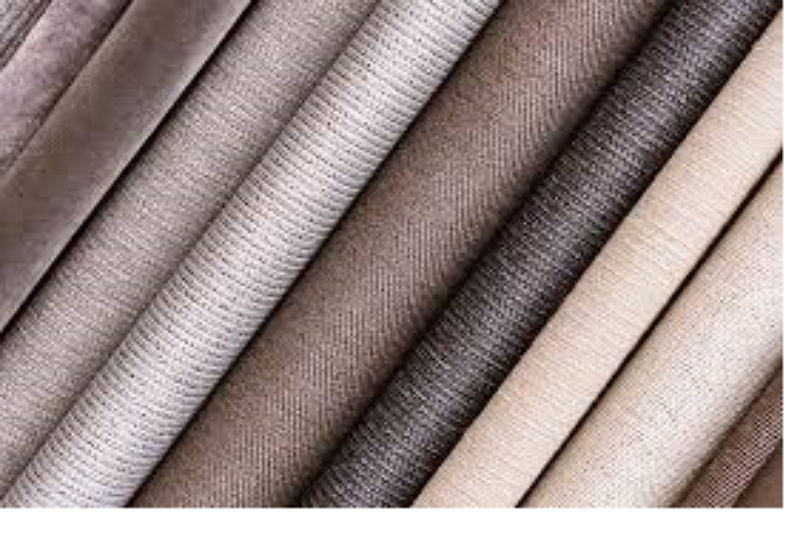What type of fabric should I use for curtains? This is a question that many people ask themselves when they are trying to make decisions about what type of curtain material to purchase. There are many great options, but the best one will depend on what you’re looking for. In this blog post, we’ll be discussing what types of fabrics work well and which ones don’t.

Types of Curtain Fabric
There are many types of curtains, including traditional curtain fabric and blackout curtains. No matter what type you choose for your home, there’s a fabric out there that will work well for whatever purpose it is being used for. So what should you know about the different materials? Let’s dive into them!
Silk
Silk is a popular fabric for curtains because of the luxurious look it provides. It’s also sometimes used as a lining behind other materials to add an extra layer and make your room more comfortable. The downside to silk is that they are costly, so many people can’t afford them. If you’re looking for something less extravagant, rayon or cotton will work just as well.
Velvet
Velvet is a popular fabric for curtains because it has a rich look that adds elegance to your home. It’s also very durable and long-lasting, so you don’t need to worry about the wear and tear of everyday life-ruining them. Unfortunately, velvet curtains are not suitable for hot climates.
Linen
Linen is an excellent fabric to use for your curtains because it’s handmade and comes in a wide variety of colors, patterns, and textures that you can choose from. It also has natural properties like antiseptic qualities that help keep the air inside your home clean. The downside to linen is that they’re more expensive than most other fabrics.
Polyester
Polyester is a synthetic fabric that’s easy to clean and dries quickly but doesn’t look great. It’s usually used for utilitarian purposes like curtains because it can block out light. The downside of polyester is that when you wash them, they’ll shrink up considerably and lose their shape, so be sure not to dry them in the machine.
Cotton
Cotton is a wonderful fabric to use for curtains because it’s durable and absorbs moisture well, making it easier on your air conditioner. The downsides are that cotton often wrinkles easily, doesn’t hold up as well when washed or dyed (which can lead to fading), and may shrink over time if you use bleach.
How to Care for Curtains Fabric?
- When you’re washing curtains made of a fabric other than cotton, be sure to check the label for care instructions.
- Often polyester can’t go in the wash, while silk needs special treatment because it’s so delicate and easily snagged by zippers or hooks on clothes hangers.
- Dry Clean Your Curtains if They Require it. If you have a pair of scissors, use them to cut away any loose threads before washing or dry cleaning your curtains.
- Hang the curtains on a clothesline if they can be machine washed and dried to avoid damaging hems with an agitator in the wash cycle.
- When ironing, use steam and a light touch. If you’re using an ironing board, lay down a clean cloth or towel to avoid putting any marks on the back of your curtains.
- Don’t forget to use care tags for delicate fabrics and dry clean only items as they come up!
Why is it Important That Curtain Fabric be Taken Care of?
- Fabric curtains can be expensive, so it’s important to preserve them.
- It’s best for curtain fabric to last as long as possible without showing signs of wear and tear or fading in color too quickly.
What are the Benefits of dry Cleaning your Curtains?
- Dry clean only textiles don’t have a chance to soak in water and can be preserved better.
- It helps prevent dirt, body oils, sweat stains like those caused by pets, or food spills from embedding into the fabric so deeply that they are impossible to remove without damaging them.
- Dry cleaning also removes mold spores before they have a chance to grow on your curtains because it exposes them to non-humid conditions.
How Often Should you dry Clean Your Curtains?
Fabric curtain care usually requires a professional cleaner once every six months, but this can vary depending on the fabrics and how much they are exposed to dirt or sunlight.
If it’s possible for you to do so safely in your own home, it’s better to spot-clean with a damp cloth than wait for the curtains to become so dirty that they need full dry cleaning.
If you can’t clean your fabric curtains yourself, make sure your cleaner has experience working on them before trusting their opinion about what is required.
Can I Iron my Curtain Fabrics?
You can iron your fabric curtains, but be sure to use a low-temperature setting on the iron and don’t press too hard. If you need more help with this process, consult an expert like your local dry cleaner or drapery seamstress for advice.
Can I Hang up my Curtain Fabrics Outside?
You can but for a short period because:
First, fabric curtains are subject to dirt and sunlight, which can degrade their colors and fabrics even more quickly than if they’re stored inside.
Second, warm outdoor temperatures accelerate the aging process of any materials that aren’t used to them. This includes your cloth curtain panels!
